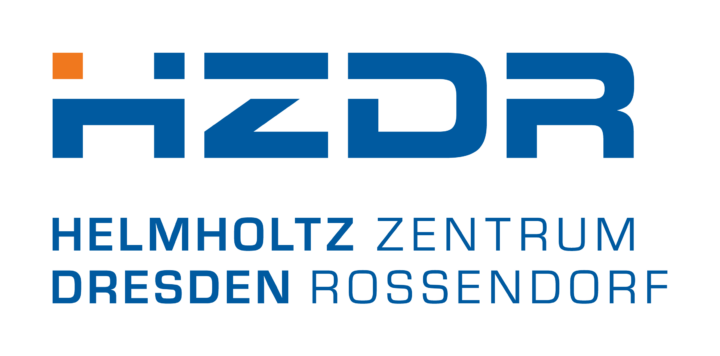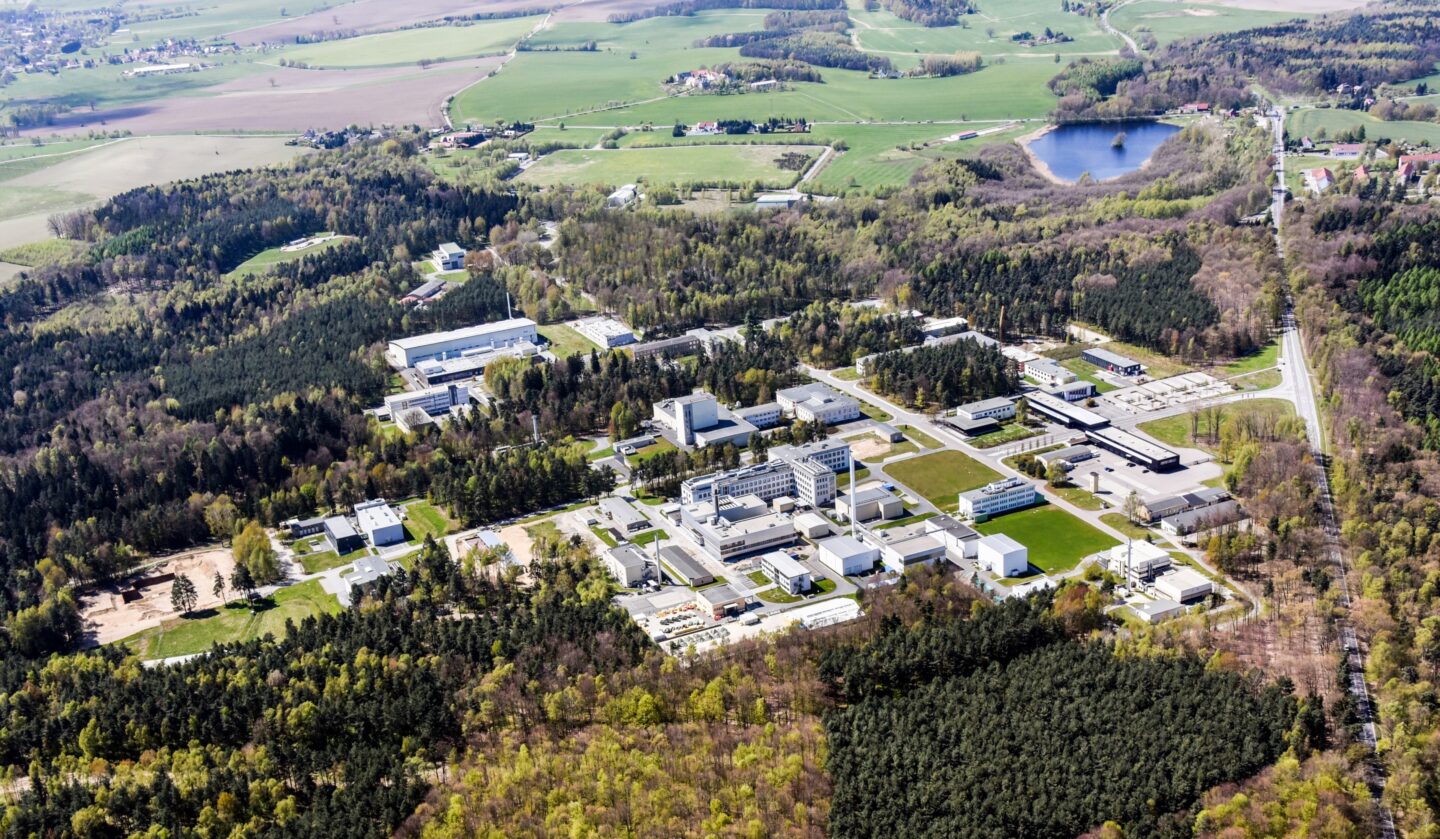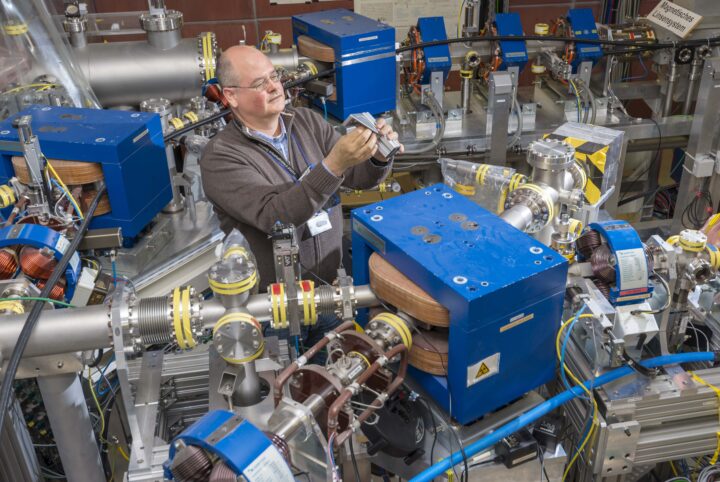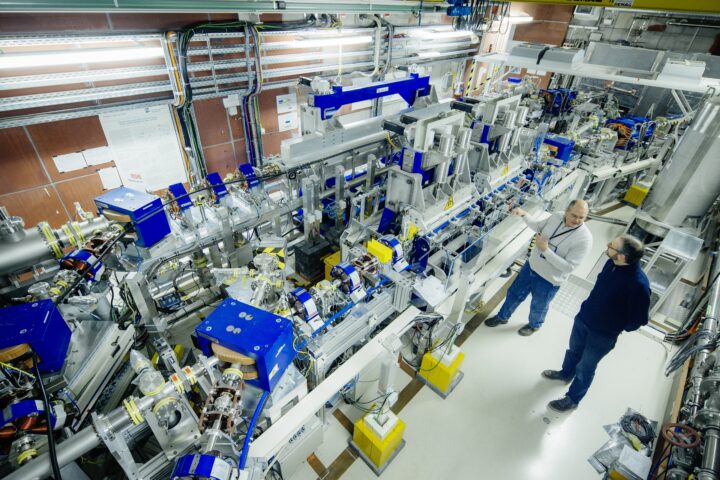HZDR
Bautzner Landstraße 400
01328 Dresden
Germany

About HZDR
How do matter and materials behave under the influence of strong fields and in smallest dimensions? How can resources and energy be utilized in an efficient, safe, and sustainable way? How can malignant tumours be more precisely visualized, characterized, and more effectively treated? Collaborating closely with universities and research institutes from all around the world, the Helmholtz-Zentrum Dresden-Rossendorf (HZDR) is endeavouring to find answers to these questions and conduct cutting-edge research in the areas of Matter, Energy, and Health.
A member of the Helmholtz Association, the HZDR develops and operates large-scale equipment of international renown. While researchers at the Ion Beam Center are pursuing new physical approaches to electronics, magnetism, and optics, in an effort to advance storage and computer technologies, very different kinds of particles and beams for application in basic research as well as the most cutting-edge accelerator technologies are being used at the ELBE – Center for High-Power Radiation Sources.
The core of the ELBE Center for High-Power Radiation Sources is the 40 MeV superconducting electron accelerator ELBE (Electron Linear accelerator with high Brilliance and low Emittance). Experiments at ELBE can use the primary electron beam as well as many secondary particle and radiation beams:
- infrared and THz photons at the Free-Electron Laser Facility FELBE
- intense phase-stable THz fields at the superradiant source TELBE
- gamma rays at the Bremsstrahlung Facility ɤELBE
- neutrons at the Neutron Time-of-Flight Facility nELBE
- positrons at the Mono-Energetic Positron Source pELBE
FELBE provides picosecond infrared/THz pulses at wavelengths from 5 – 250 µm, that is from 1.2 to 60 THz, at a repetition rate of 13 MHz with up to µJ pulse energies.
Carrier-envelope phase-stable THz pulses from 0.1 – 2.5 THz at flexible repetition rates up to 250 kHz with several µJ pulse energy are available at TELBE. The timing accuracy of few tens of femtoseconds enables the study of THz-driven phenomena at their fundamental energy- and sub-cycle time scales.
Both facilities are complemented by several table-top laser systems and THz sources, synchronized with the accelerator-based fields. This enables various pump-probe schemes, which are currently extended to include electron emission and optical nearfield techniques. Samples can be studies down to liquid helium temperatures and under strong external magnetic fields up to 10 T.
The HZDR operates one of the most intense high-power laser systems in Europe, the dual beam 1 PW / 150 TW DRACO Ti:Sa laser system that provides high-intensity infrared laser pulses of 10^21 W/cm² of 30 fs pulse duration at Hz repetition rate. It is complemented by a variety of probe beams and serves target stations dedicated to cutting-edge plasma accelerator research, with applications in cancer research and FEL physics. With the currently commissioned ATHENA laboratory, the facility adds the diode pumped high energy PW laser Penelope to its portfolio, extending applications to high energy density (inertial fusion) science.
The Dresden High Magnetic Field Laboratory (HLD) offers pulsed magnetic fields up to 95 T for materials research. HLD is a member of the ESFRI landmark European Magnetic Field Laboratory (EMFL).
HZDR established the Helmholtz International Beamline for Extreme Fields (HIBEF) at one of the world’s brightest sources of X-rays jointly with the main partners DESY and CLF (UK). It represents a key addition to the High-Energy Density Science Instrument (HED) at European XFEL in Hamburg. With its multi 100 TW short pulse and 100J long pulse lasers, the HIBEF infrastructures provides unprecedented access to matter under extreme conditions of high pressures, temperatures, or electromagnetic fields.
Some 1,500 employees are currently working at six HZDR sites: the main site in Dresden-Rossendorf, a Leipzig based research site, the Helmholtz Institute Freiberg for Resource Technology, CASUS (Center for Advanced Systems Understanding) in Görlitz, the Rossendorf Beamline (ROBL) at the European Synchrotron (ESRF) in Grenoble, France and HIBEF at the European XFEL in Schenefeld.


